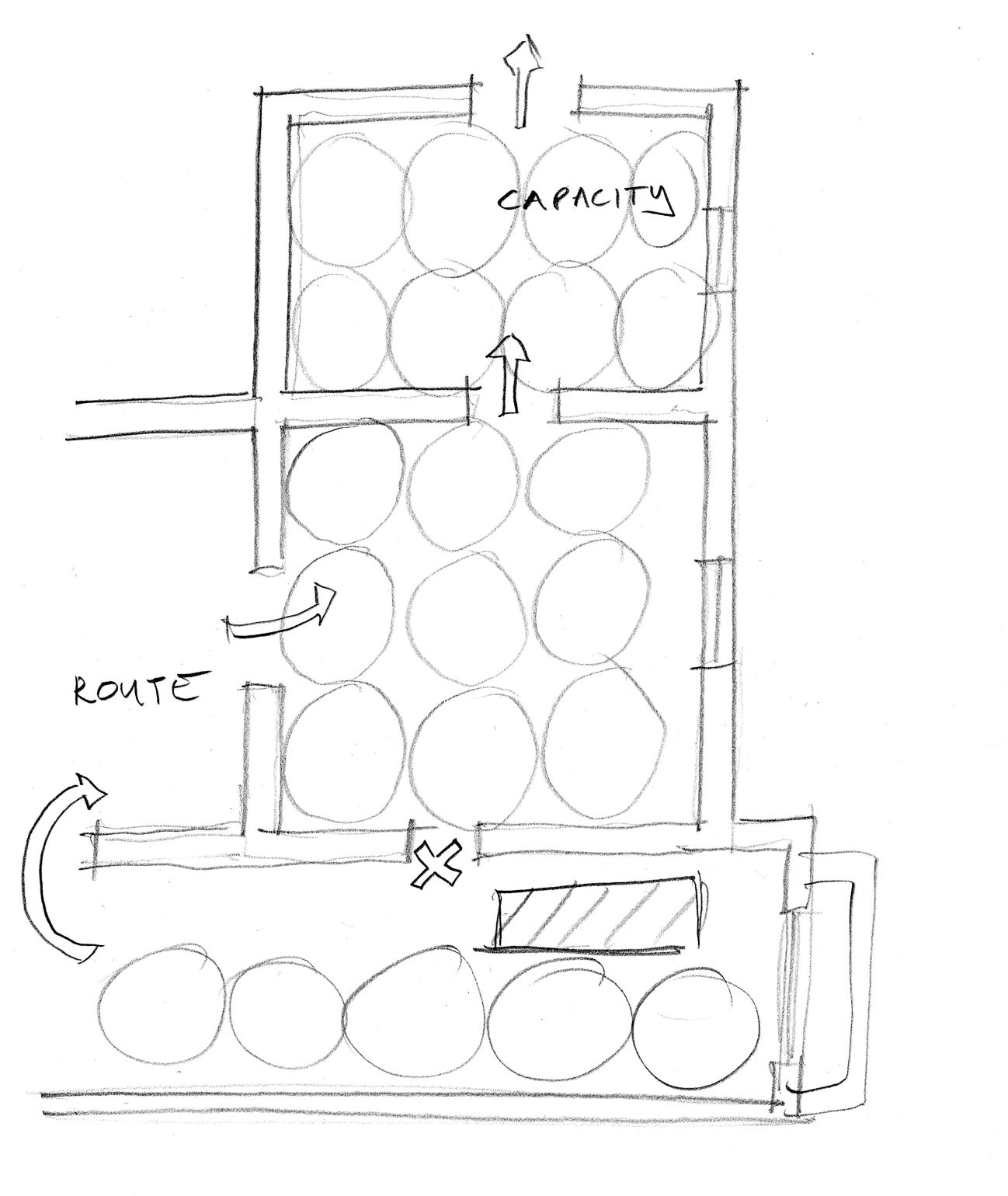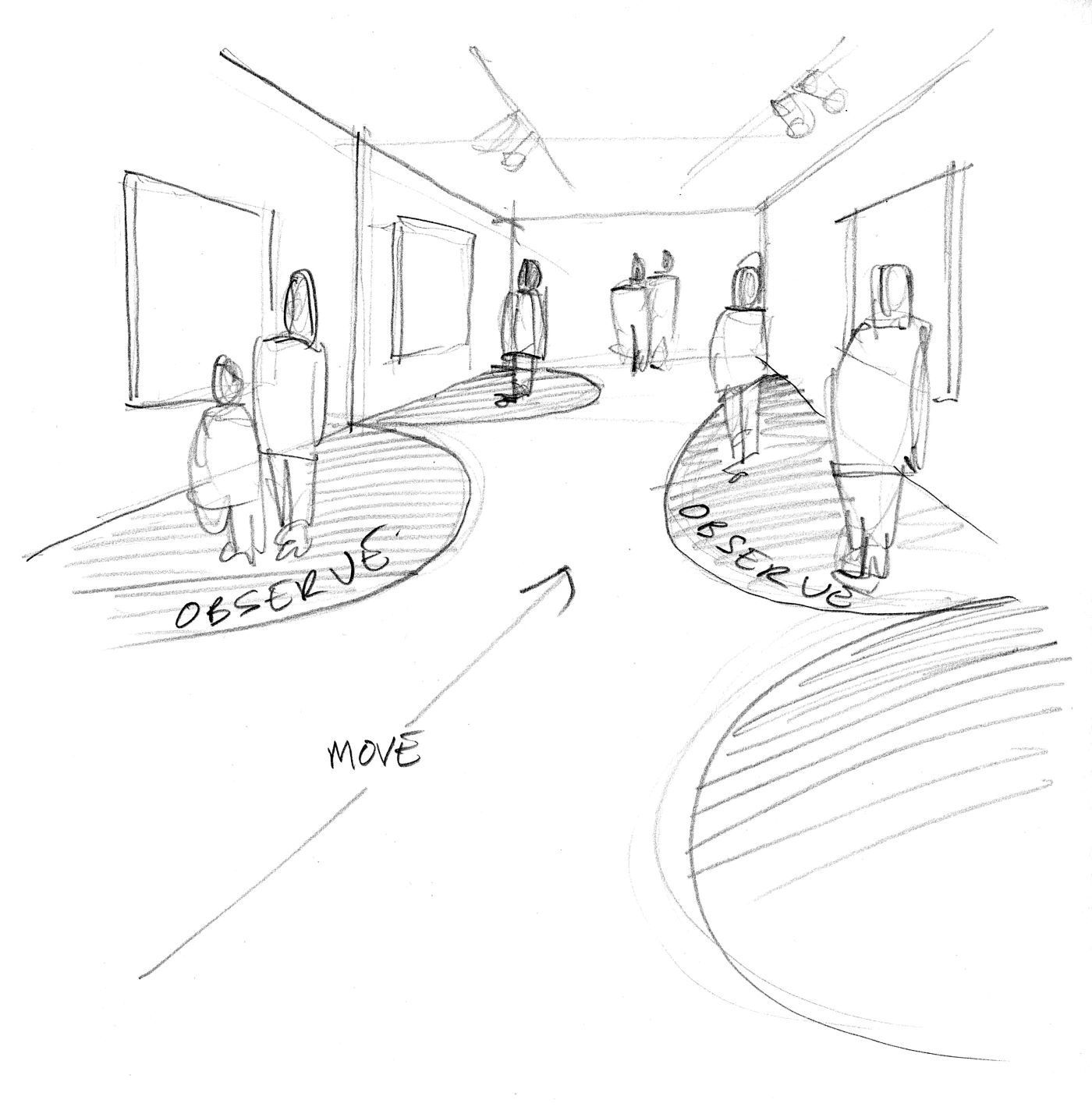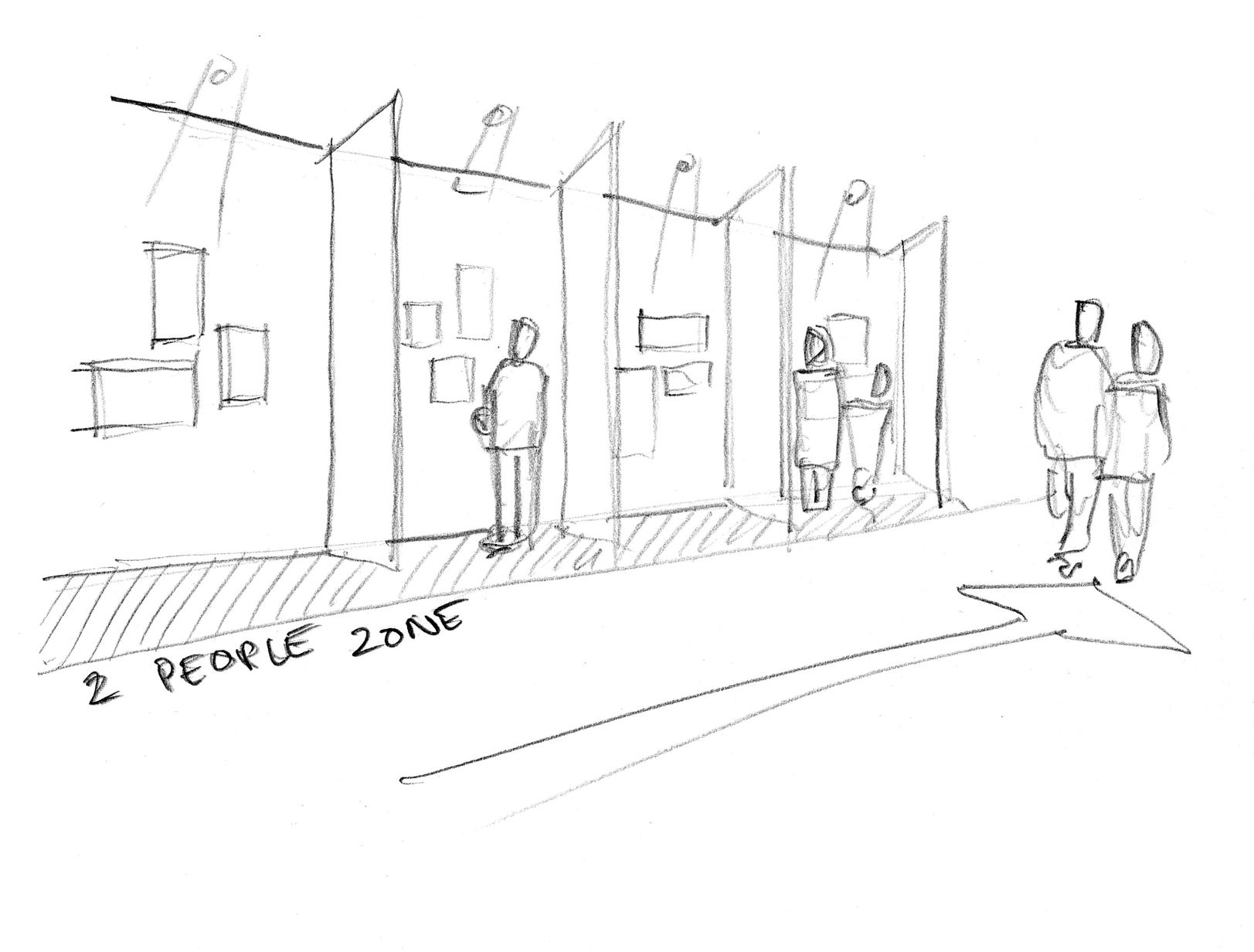Stay in touch with the latest news from AIM and get information on sector grants, jobs and events with our free fortnightly E-News.
Rethinking museum spaces for reopening
Award-winning architects John Puttick Associates explore how you might optimise your museum space to address the challenges of reopening in a COVID secure way.
Museums across the country are currently opening their doors again or planning to do so. At John Puttick Associates, we have worked with museums of various scales – often on projects that involved rethinking the visitor journey – which are relevant to the current situation. While the emphasis of adapting museums is rightly on public safety, the visitor experience also needs to be carefully considered.
We think museums have an opportunity to rethink their spaces and respond creatively – in a way that will inspire confidence in the public
and encourage their safe return.
The National Museum Directors’ Council guidance recognises that there are both organisational and physical challenges for museums, requiring a management and design response. Many believe that new procedures and installations are likely to be in place for the medium-term so physical adaptations should be not only cost effective but also robust and in-keeping with the museum experience. It is also important that they are adaptable to visitor behaviour as well as removable and recyclable (with a view to removal once the health crisis has passed).
The NMDC document has guidance on both workforce and visitor safety. A workspace assessment is required by museums planning a
return of staff and volunteers and will include establishing how many staff can work while practicing social distancing, reorganisation of
office spaces with back-to-back or side-to-side working and ideally one-way routes. Particular consideration will need to be given to hands-on tasks such as archiving or conservation.
Reorganisation of any museum spaces will of course need to consider accessibility throughout.
The capacity of a museum to accommodate visitors while meeting social distancing requirements should also be assessed. As the visitor journey is unlikely to be even-paced throughout the building careful choreography is required to account for the size of rooms, the location of popular exhibits, the possibility of separate entrance/exits and so on. New wayfinding and floor graphics can help highlight these procedures to the visitor in a way that is visually appealing as well as clear.
The visitor experience starts on arrival – and this may also need to be rethought. Even with time-based ticketing visitors may need to wait outside the building before entering so waiting spaces, canopies and perhaps external information or exhibits could be considered. Once inside, the new entry sequence should include ticket-check, the opportunity for hand sanitising as well as clear information on how the visitor is expected to behave during their visit and an explanation of the measures that will support them.
Popular exhibits may need a new installation of information ahead of them to slow visitor approach down, while intimate small-scale exhibits may require screens installed to either side to maintain visitor separation. In many cases museums will decide to close interactives – in which case perhaps new displays can be installed over them to prevent the exhibitions from feeling ‘closed’. Naturally education spaces and school visits will require their own careful consideration.
Before reopening an advanced ‘soft-opening’ – with staff, museum friends or members – can help test new arrangements. It will then
be important to visualise the measures put in place and share them with the wider public, both so visitors know what to expect and – if the reorganisation has been carried out with creativity – inspire them to come and see what is new. After a long period of closure rethinking the museum space offers an exciting new beginning.
John Puttick Associates are available to talk to any museum who would like to discuss their adaptations in preparation for re-opening.
Please call 020 37397020 or email info@johnputtickassociates.com.





